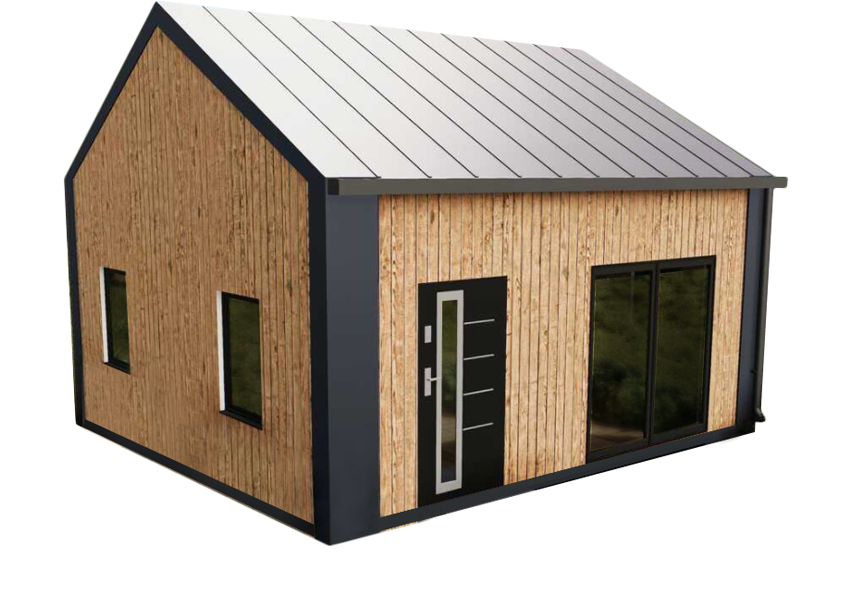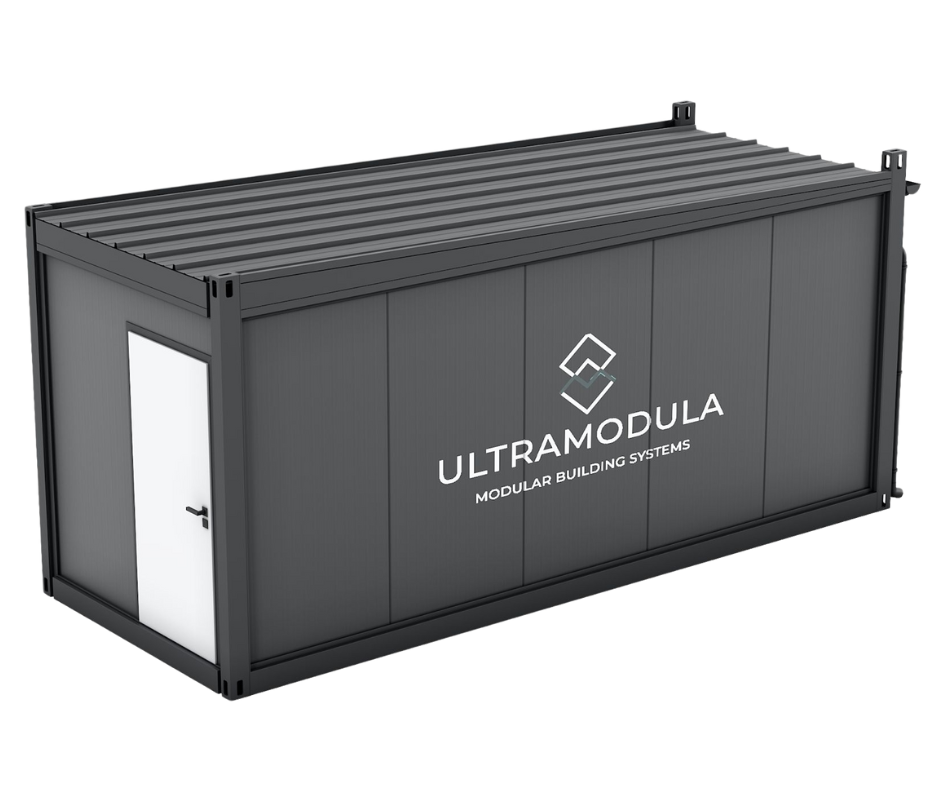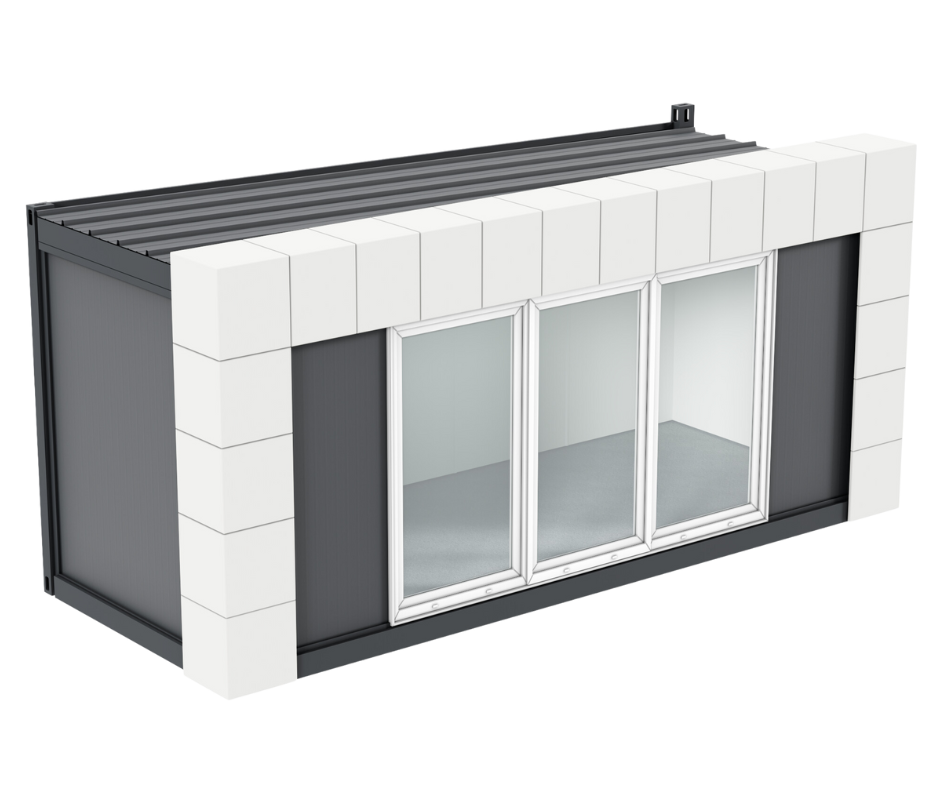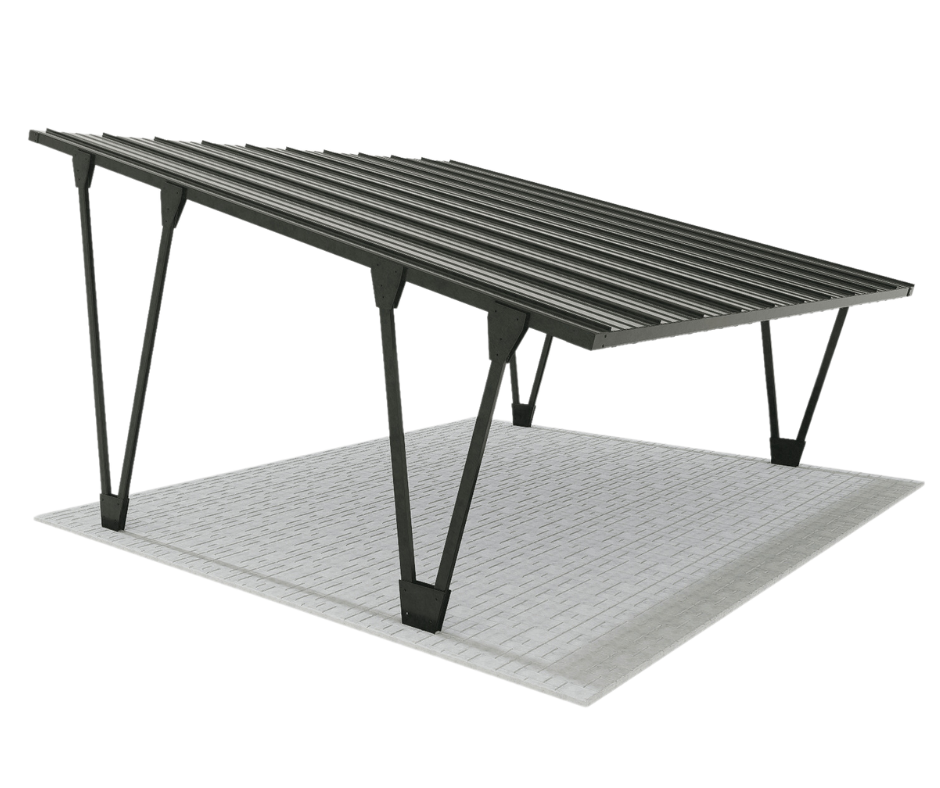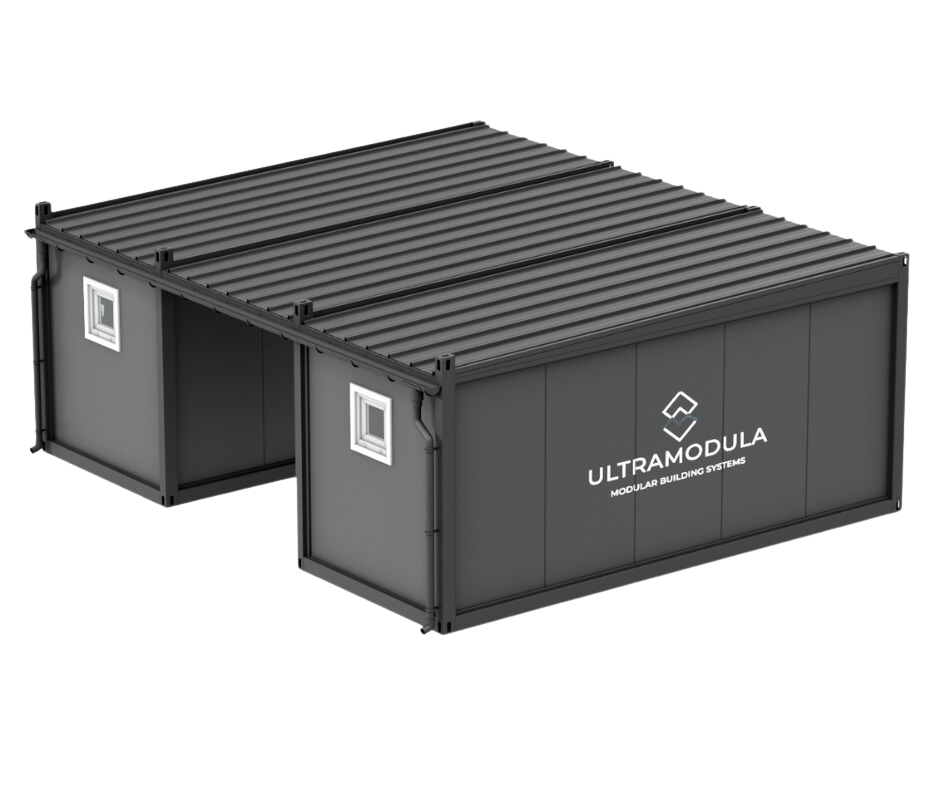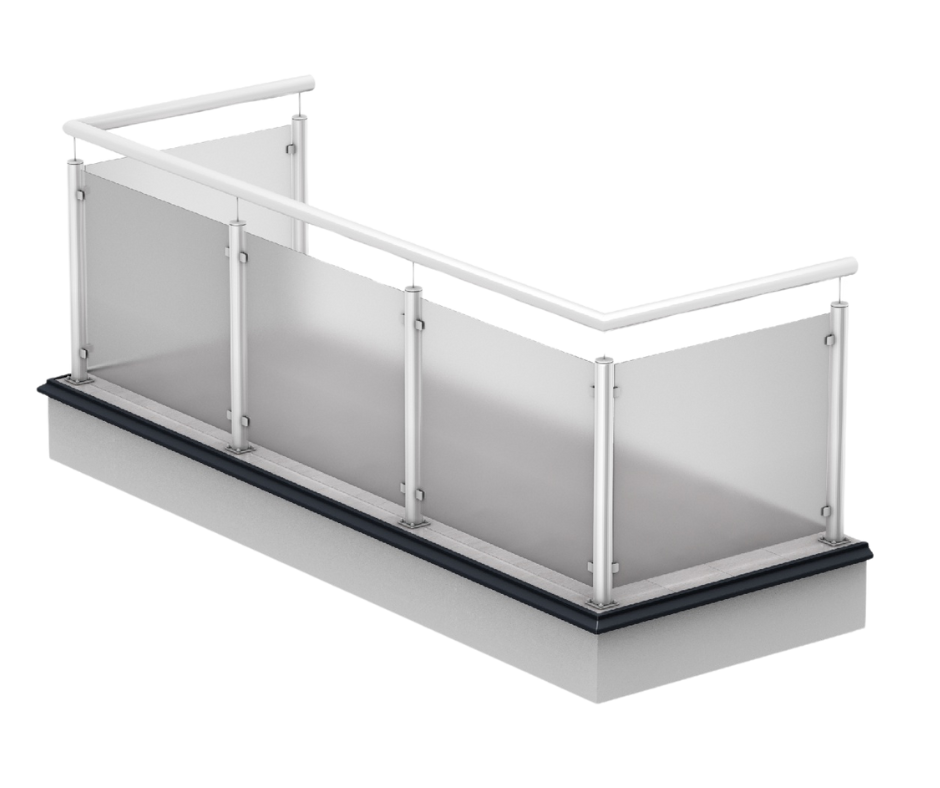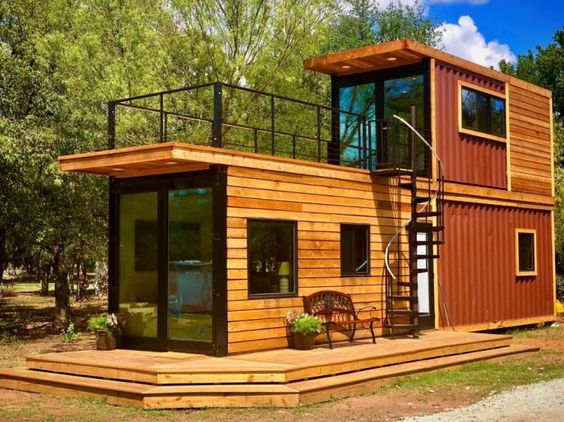
Containers as elements of landscape architecture
In landscaping, everything is like a puzzle. You can say that a landscape architect is a sudoku master who perfectly matches all elements into precise patterns, and architecture is an open-air ballet where the landscape is the background and the architectural elements and vegetation form a dance arrangement. Like ballet, landscaping requires harmonious work between elements to create beauty and functionality, while allowing people to comfortably use the space that surrounds them.
The pioneer of the development of landscape architecture in Poland was Professor Franciszek Krzywda-Polkowski, who obtained the title of a certified architect at the Higher School of Painting, Sculpture and Architecture named after Strogonov in 1913 in Moscow, and then went to London, where he took a one-year course in urban planning. He also studied in Boston and New York. One of his most famous projects is the modernist park-monument surrounding Żelazowa Wola sun birth of Fryderyk Chopin. He was not afraid to introduce innovative forms to his projects, such as containers today as elements of landscape architecture.
Applications of containers in landscape architecture
Nowadays, landscape architecture is becoming more and more innovative and creative, looking for new ways to integrate human spaces with the surrounding environment. One of the interesting trends in this field is the use containers as creative elements in the design of outdoor spaces. Containers, which until recently were mainly associated with transport, gain a new life: they are used as commercial and gastronomic spaces, pavilions exhibition spaces, recreational spaces and even studios artistic. Their mobility, flexibility and ease of adaptation allow you to create unique solutions in the design of outdoor spaces.
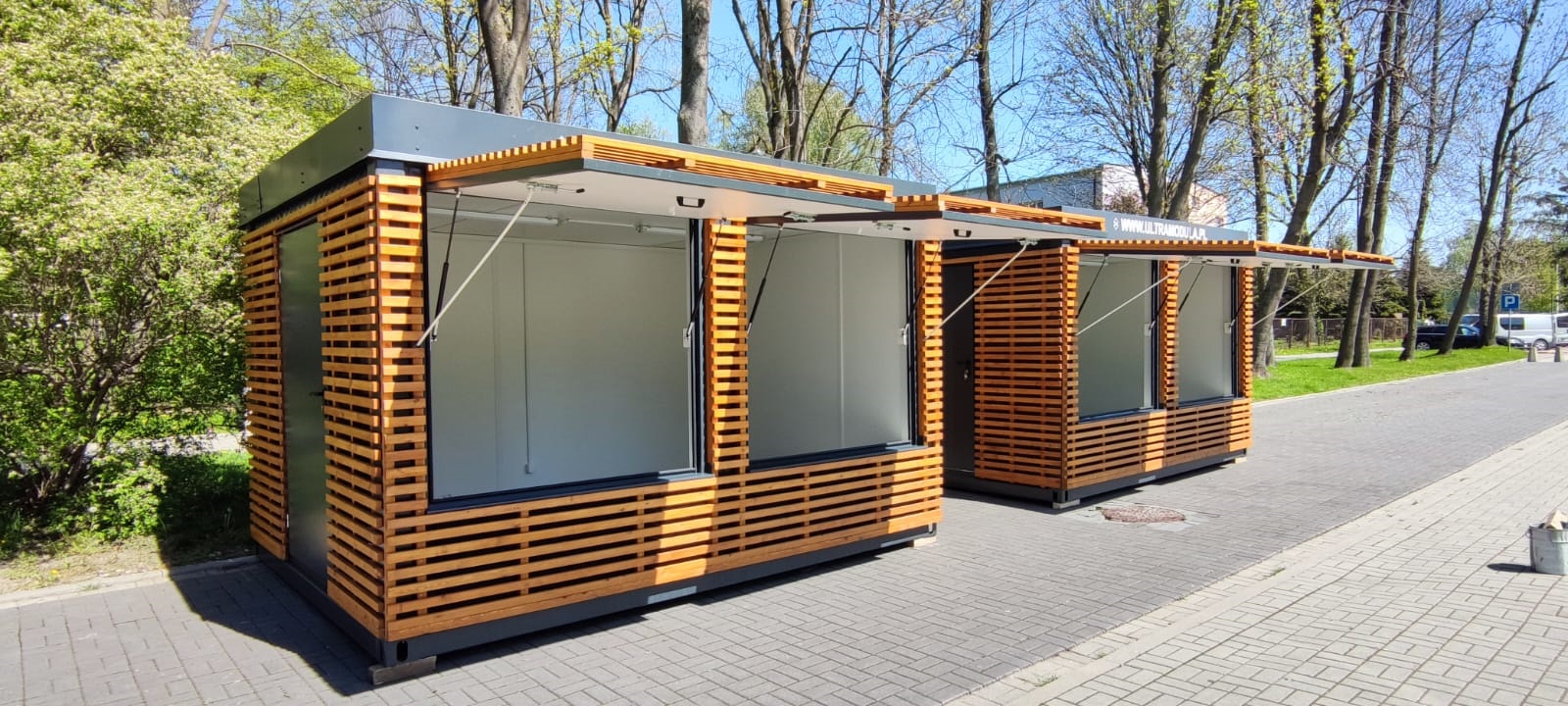
Food outlet, shop containerized | Ultramodule
Commercial and catering containers
Availability, modularity and low costs make containers an ideal solution for trade. Building from them pavilions is simple and fast, and also allows you to freely move your business to new places, following customers or changing spatial development plans. Commercial and catering containers are often used at festivals, fairs, or in various types of catering outlets.
The box construction of the containers gives a wide range of possibilities not only for the implementation of economic projects, such as those mentioned above commercial pavilionsbut also avant-garde and designer ones, such as unique cafes or restaurants. Great type containerwhich can be used in this way is called "open side", i.e. a version with an open side wall. It enables the creation of an open space that blends in with other elements of landscape architecture, such as vegetation.
Exhibition and information pavilions
Using modular containers, you can create creative and functional exhibition and information pavilions. Designs of outdoor spaces designed for various types of events, fairs, festivals or exhibitions, where a mobile and easily configurable space is needed, fit perfectly. Containers as exhibition pavilions offer many advantages. First of all, their construction is based on modules, which allows for flexible adaptation to a specific event. They can be combined, put together in various layouts and create unique arrangements.
In addition, the containers are easy to transport and assemble. Their mobility allows you to move them anywhere, which is especially useful at various types of outdoor events. Quick assembly and disassembly make the containers convenient to use and save time. Containers as exhibition and information pavilions are an attractive and practical solution for landscape architects who design urban meeting zones. Their mobility, flexibility and the possibility of personalization give a wide range of possibilities to create unique exhibition spaces.
Points of Interest
When designing various public spaces, such as parks, squares, boulevards or promenades, landscape architects need universal solutions that can be used for many purposes, depending on the needs and context of a given place. Containers are the perfect answer to this need. They can be used as the already mentioned information kiosks and food outlets, but also as toilets, bike rentals, small libraries or even places to organize social meetings. The list of ideas is endless.
Creative spaces
Containers are not only a perfect solution for business or public places, but also for artists. Thanks to their mobility and ease of transport, containers can be used as creative spaces that can be easily moved from one place to another. Such mobility gives artists the freedom to experiment and adapt to changing needs. Containers can become a great alternative to traditional art galleries, because they can be easily adapted to different places, which increases accessibility for visitors. Thanks to this, there is an opportunity to exhibit works of art in different places, which can increase its popularity.
7 reasons why containers as elements of landscape architecture are a good idea
Reason number 1: Quick and easy installation
In today's world, time is extremely valuable, that's why modular containers are highly valued for their speed and ease of installation. This has a beneficial effect on both costs constructionas well as the possibility of implementing plans for the arrangement of external space in a short time. It takes only a few weeks or even days to erect a small facility from containers. The very process of "building" on site is very fast, and placing the containers in the indicated place using a crane or HDS takes literally several minutes. Even larger buildings, consisting of several or several dozen containers, are erected much faster than traditional brick buildings.
Reason number 2: Economics
One of the main arguments for using modular containers as elements of landscape architecture is economy. The construction costs of container buildings are much lower compared to traditional construction methods. This is of great importance, especially for investments carried out with public funds.
The low price is influenced by both the materials used and labor costs. Modular containers are prefabricated, which means that they are entirely manufactured in a factory outside the construction site, and then transported to the investment site as ready-made elements for assembly. As a result, the total cost of their production is lower than in the case of other facilities.
Reason number 3: Mobility
Modular containers are easy to move thanks to quick and inexpensive assembly. They are designed so that they can be easily transported, and a car with a crane is enough to transport them. This mobility is especially useful for temporary projects such as art exhibitions or city festivals. Additionally, when container it is not used, does not generate any costs, and its storage can be done in a multi-storey manner, which requires less space.
Reason number 4: Easy to set up and personalize
Another advantage of modular containers is the ability to adapt them to the expectations of the space designer. Containers can be equipped with various sizes of windows, doors and glazing. You can easily design a dedicated functional layout of the interior by adding partition walls or attaching further modules. It is also possible to personalize the external finish, such as color, cladding (e.g. wooden planks) and the choice of doors, windows and roofing. Thanks to this, even a simple container can become a modern building, the use of which no landscape architect will be ashamed of.
Reason number 5: Versatility and universality
Modular containers are extremely versatile and can be used for many purposes. They can be used as commercial or gastronomic spaces, exhibition pavilions, information points, recreational spaces, and even art studios and many others. Their simple design and the possibility of modification open up many new, unobvious possibilities for use by architects. The universal design and standardization of sizes allow for the design of buildings of various shapes and sizes.
Reason number 6: Durability
Designed to withstand the extreme conditions of sea transport, modular containers are extremely durable and resistant to harsh weather conditions. In addition, they are fireproof, which increases security. The container production process takes place in controlled conditions in production halls, with the use of professional equipment and in accordance with construction standards. The entire structure is created in an environment with controlled temperature, humidity and no dust. Components such as doors and windows are assembled under factory conditions, which guarantees greater precision and better quality.
Reason number 7: Low maintenance costs
In addition to low construction costs, modular containers are also characterized by low maintenance costs. In the case of using them as elements of public architecture, this is an important argument. Utility bills will be much lower than traditional buildings. Containers also require minimal maintenance, making them a viable long-term option. Made of durable materials, they can be used for many years without the need to incur repair costs.
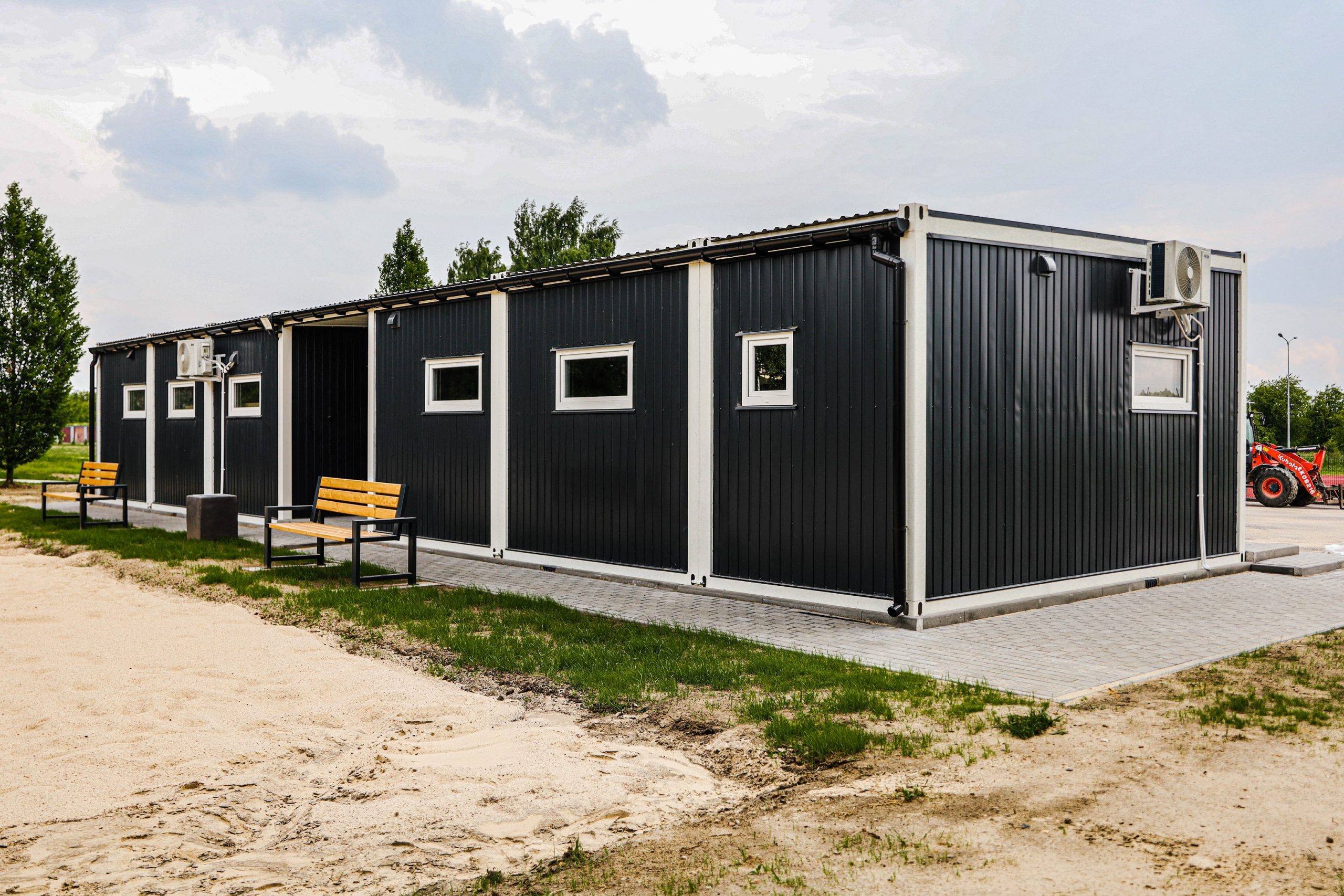
Changing rooms container | Ultramodule
A well-matched piece of the puzzle
Modular containers have many advantages as elements of landscape architecture. They are economical, easy to install, do not require complicated formalities, they are mobile, scalable, versatile, easy to configure and personalize, durable, low maintenance and environmentally friendly. Therefore, they are increasingly used in various architectural projects, providing modern and functional solutions for various sectors.

